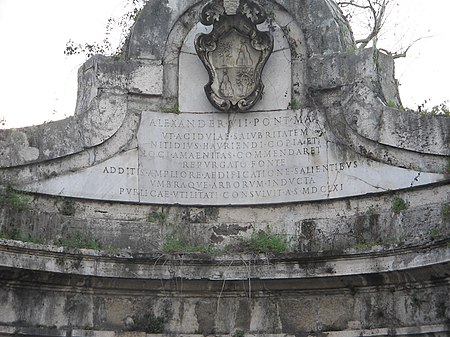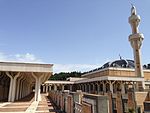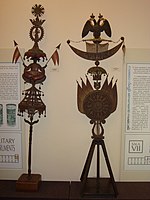Fontana dell'Acqua Acetosa (Rome)
Fountains in Rome

The Fontana dell'Acqua Acetosa is a fountain in Rome (Italy), located in the flat area with the same name, in the quarter Parioli; at this point the river Tiber forms a deep bend before heading north again. The fountain rises at a lower elevation than the street level, and is therefore accessed via a staircase. In 2003 the Fondo Ambiente Italiano, on the basis of a popular survey, identified it as the monument to which Italians are fondest of.
Excerpt from the Wikipedia article Fontana dell'Acqua Acetosa (Rome) (License: CC BY-SA 3.0, Authors, Images).Fontana dell'Acqua Acetosa (Rome)
Piazzale dell'Acqua Acetosa, Rome Parioli
Geographical coordinates (GPS) Address Nearby Places Show on map
Geographical coordinates (GPS)
| Latitude | Longitude |
|---|---|
| N 41.931388888889 ° | E 12.485555555556 ° |
Address
Piazzale dell'Acqua Acetosa
Piazzale dell'Acqua Acetosa
00197 Rome, Parioli
Lazio, Italy
Open on Google Maps









